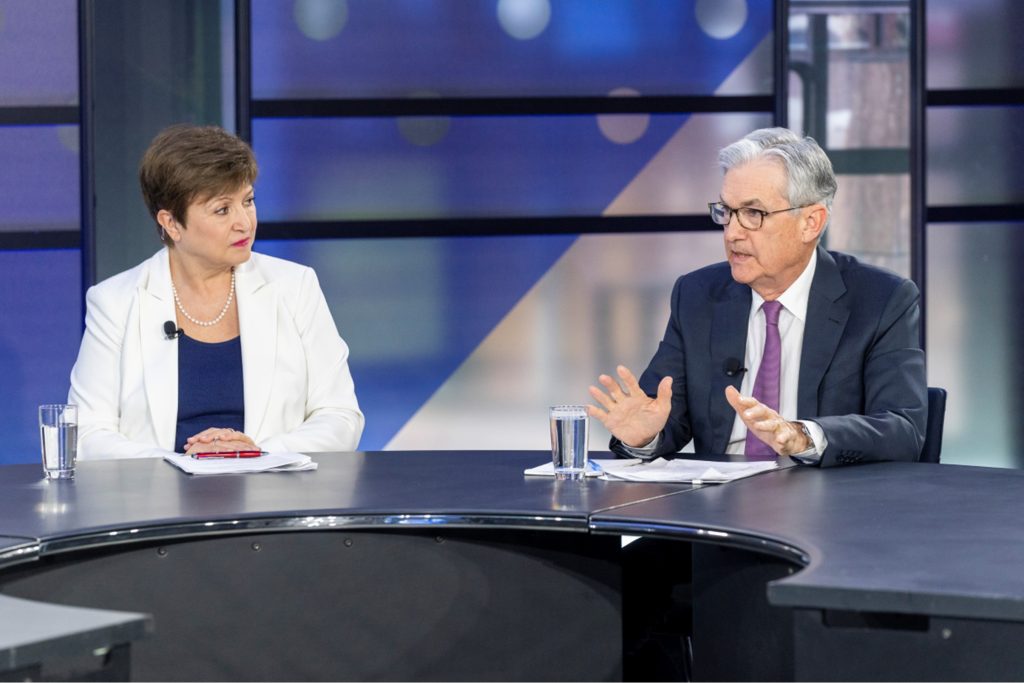
Fed Chairman Powell Shows His Steady Hand and Firm Conviction at Monetary Conference
In what is his last scheduled public appearance before the post-FOMC statement expected on Sept. 21, Fed Chairman Powell did not say anything that would change expectations of another 75bp Fed Funds rate hike. He instead emphasized the Fed’s commitment to reduce inflation and believes it can be done and at the same time avoid “very high social costs.”
“It is very much our view, and my view, that we need to act now forthrightly, strongly, as we have been doing, and we need to keep at it until the job is done,” Powell said Thursday (Sept. 8) at the 40th annual Monetary Conference held virtually by the Cato Institute.
The discussion was held after it was known that the Eurozone Central Bank had just raised rates by 75bp. Powell’s talk and the interest rate hike overseas didn’t upset U.S. markets as U.S. Jobless claims had been reported earlier and showed a very strong labor market which helped demonstrate that the Fed’s actions to return inflation to a more acceptable level are not severely hurting business.
The Federal Reserve Chairman continued to reiterate what he has been saying, that the U.S. central bank is focused on bringing down high inflation to prevent it from becoming entrenched as it did in the 1970s. The core theme, most recently heard at the Jackson Hole Economic Symposium, is that he is resolved to return inflation to the Fed’s 2% target.
Mr. Powell said it is critical to prevent households and businesses from ongoing expectations that inflation will rise. He said this is a key lesson taken from the persistent inflation of the 1970s. “The public had really come to think of higher inflation as the norm and to expect it to continue, and that’s what made it so hard to get inflation down in that case,” Powell said. The takeaway for policymakers, he added, is that “the longer inflation remains well above target, the greater the risk the public does begin to see higher inflation as the norm, and that has the capacity to really raise the costs of getting inflation down.”
Speaking the day before at the Economic Outlook and Monetary Policy at The Clearing House and Bank Policy Institute Annual Conference, Fed Vice Chairwoman Lael Brainard, didn’t express a preference on the size of the next increase but underscored the need for rates to rise and stay at levels that would slow economic activity. “We are in this for as long as it takes to get inflation down,” she said.
Fed officials have raised rates this year at the most rapid pace since the early 1980s. The federal funds rate, the percentage banks charge each other for overnight borrowing, rose from near zero in March to a range between 2.25% and 2.5% in July, which is where it sits today.
Take Away
The Fed’s two mandates are to keep inflation at bay and to make sure there are adequate jobs in the U.S. The lessons of the past indicate that expectations of inflation are inflationary themselves. The Fed Chairman and Fed Vice Chairwoman would undermine their goals if they did not talk tough on inflation. With the economy not having sunk into a deep recession, and joblessness at acceptable levels, their actions are likely to match their tough talk.
The stock market typically behaves well when confident that the Fed is fighting inflation and has a steady grasp of what too far is. Overly tight money would dampen business growth.
Managing Editor, Channelchek
Sources
https://www.federalreserve.gov/newsevents/calendar.htm
https://www.cato.org/events/40th-annual-monetary-conference
https://www.nytimes.com/live/2022/09/08/business/ecb-meeting-inflation-interest-rates
https://www.reuters.com/markets/us/us-weekly-jobless-claims-fall-three-month-low-2022-09-08/
